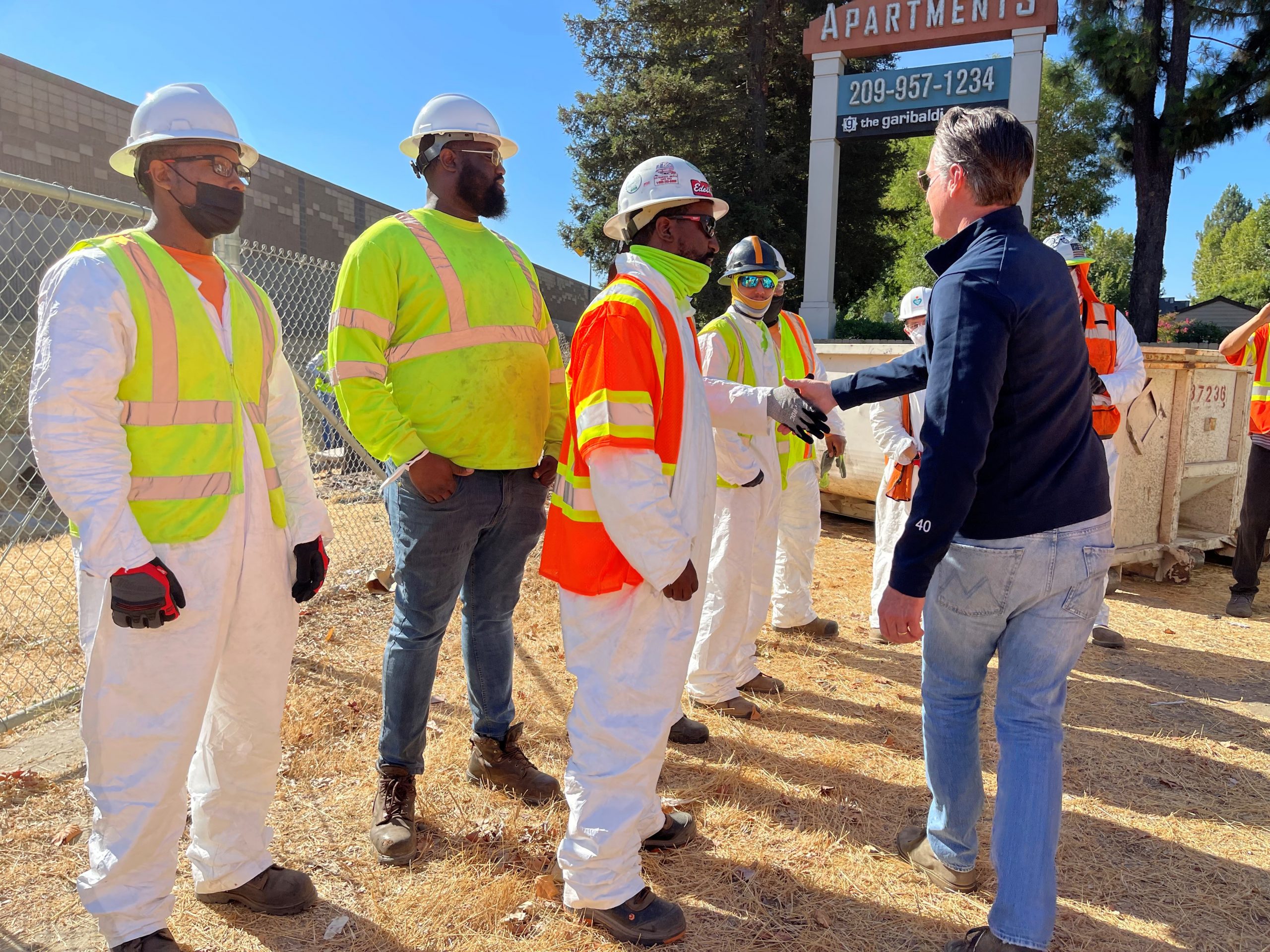Plan includes record investments to tackle homelessness and expand behavioral health housing
LONG BEACH – During a visit to a Clean California site in Long Beach today, Governor Gavin Newsom outlined his plan for record investments in mental health services and behavioral health housing as part of a comprehensive approach to tackling the state’s homelessness crisis. Earlier in the day, the Governor met with residents, outreach workers and Caltrans clean-up crew members at an encampment in Stockton where unhoused individuals were offered options to move out of tents and into safer, more stable shelter and housing.
“We have to get to the root issues of why people end up on the street in the first place – and for many, that’s due to deteriorating mental health conditions,” said Governor Newsom. “For too long, California has had a piecemeal response to homelessness. When officials shut one site down, another one was likely to pop up. We’re changing that mindset and working to remove encampments by treating the root causes – lack of housing and lack of mental health resources – by investing $3 billion for behavioral health and conservatorship housing.”
The plan includes a $12 billion investment over two years to confront the homelessness crisis, helping the most unwell individuals move off the streets and into housing with wrap-around services. As part of this investment, Governor Newsom led the charge for a $3 billion behavioral health housing initiative – the largest investment in California history for rebuilding the behavioral health pipeline. The $3 billion plan is expected to create 22,000 new beds and treatment slots, a component of the 42,000 new homeless housing units that will be created under the California Comeback Plan.



Governor Newsom at encampment in Stockton and Clean California site in Long Beach today.
Governor Newsom last year signed legislation to strengthen Laura’s Law and expand funding for the treatment of substance abuse. AB 1976 makes county participation in Assisted Outpatient Treatment (i.e. Laura’s Law) automatic unless a county opts out. As of June 2021, a total of 31 counties in California have not opted out and will implement Laura’s Law, covering 80 percent of the state’s population. AB 2265 expands the kinds of services Mental Health Services Act funds can pay for, specifically addiction treatment. In addition, the Department of Health Care Services has leveraged over $260 million in federal opioid funding to support the Medication Assisted Treatment Expansion Project, allowing easy access to opioid addiction treatment in emergency departments and hospitals, primary care clinics, drug treatment programs, jails and prisons, and other health care settings.
“Let me be blunt: it is unacceptable to not provide proper care to those struggling the most, who’ve found themselves homeless due to mental health and addiction challenges,” said Governor Newsom. “We cannot continue to tolerate the open drug use on our streets – we can no longer just look the other way.”
The Governor’s plan also advances CalAIM, a once-in-a-generation reform of our Medi-Cal system that will better manage risk and improve outcomes through whole person care approaches and addressing social determinants of health. This will better serve California’s most vulnerable residents: the homeless, our children and people cycling in and out of the criminal justice system.
To ensure that local governments fulfill their obligation to provide services to people experiencing homelessness and to create safe and clean streets for all Californians, the California Comeback Plan includes $147 million for encampment resolution and clean-up efforts. In addition, the Governor has launched the $1.1 billion Clean California initiative to hire people exiting homelessness, at-risk youth, formerly incarcerated individuals and others to support state and local litter abatement efforts, providing them with a steady income to get back on their feet and lower the rate of recidivism. Caltrans will match local investments, focusing on the needs of more severely underserved communities, with the goal of funding 300 local projects throughout California over the three-year program.
###

